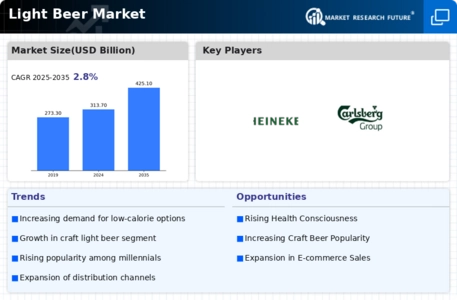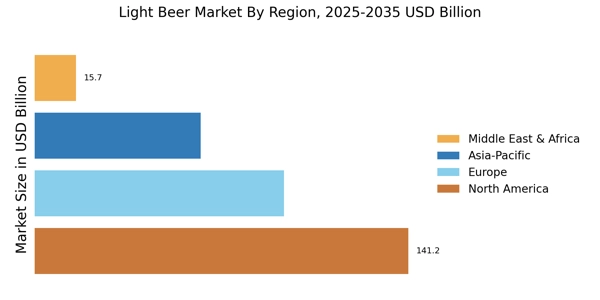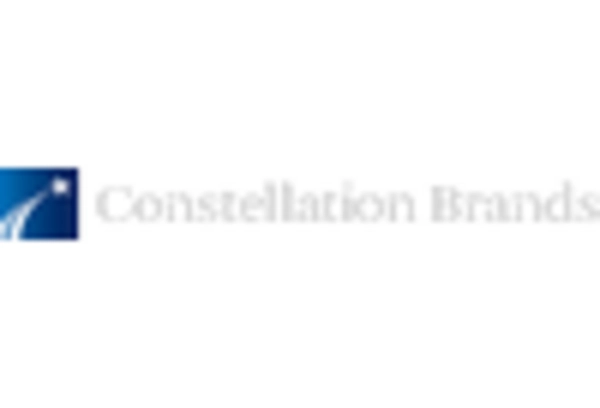Flavor Innovation
Flavor innovation serves as a significant driver within the Light Beer Market. As consumer preferences evolve, there is a noticeable shift towards unique and diverse flavor profiles. Breweries are increasingly experimenting with various ingredients, such as fruits, spices, and herbs, to create distinctive light beer offerings. This trend not only attracts adventurous consumers but also encourages brand loyalty. In recent years, the introduction of flavored light beers has contributed to a notable increase in market share, with some brands reporting double-digit growth in sales. The Light Beer Market is thus positioned to capitalize on this trend, as innovative flavors may entice new customers and retain existing ones, fostering a dynamic and competitive landscape.
Social Media Influence
The influence of social media on consumer behavior is a notable driver in the Light Beer Market. Platforms such as Instagram and TikTok have transformed how brands engage with consumers, allowing for targeted marketing strategies that resonate with younger demographics. The visual nature of these platforms enables breweries to showcase their products creatively, often leading to viral trends that can significantly boost sales. In 2025, it is anticipated that a considerable percentage of light beer purchases will be influenced by social media campaigns, as consumers seek products that align with their online personas. The Light Beer Market is likely to leverage this trend, utilizing social media to enhance brand visibility and connect with a broader audience.
Health-Conscious Choices
The increasing trend towards health-conscious choices among consumers appears to be a pivotal driver for the Light Beer Market. As individuals become more aware of their dietary habits, the demand for lower-calorie and lower-alcohol beverages has surged. This shift is reflected in the market, where light beers, often marketed as healthier alternatives, have gained traction. In 2025, the light beer segment is projected to account for a substantial share of the overall beer market, indicating a growing preference for beverages that align with healthier lifestyles. The Light Beer Market is likely to benefit from this trend, as brands innovate to create products that cater to health-conscious consumers, potentially leading to increased sales and market penetration.
Sustainability Initiatives
Sustainability initiatives are becoming increasingly relevant in the Light Beer Market. As consumers express a growing concern for environmental issues, breweries are responding by adopting eco-friendly practices. This includes sourcing ingredients sustainably, reducing water usage, and implementing recycling programs. Such initiatives not only appeal to environmentally conscious consumers but also enhance brand reputation. In 2025, a significant portion of consumers is expected to prefer brands that demonstrate a commitment to sustainability, potentially influencing purchasing decisions. The Light Beer Market may see a shift in consumer loyalty towards brands that prioritize environmental responsibility, thereby driving growth and fostering a more sustainable market.
Convenience and Accessibility
Convenience and accessibility are critical drivers in the Light Beer Market. As lifestyles become increasingly fast-paced, consumers are seeking products that offer ease of purchase and consumption. The rise of e-commerce and delivery services has made it simpler for consumers to access light beers, contributing to a surge in online sales. Additionally, the availability of light beers in various retail formats, including convenience stores and supermarkets, enhances their accessibility. In 2025, the market is expected to witness continued growth in sales driven by the convenience factor, as consumers prioritize products that fit seamlessly into their busy lives. The Light Beer Market is thus positioned to thrive as it adapts to these changing consumer preferences.


















Leave a Comment